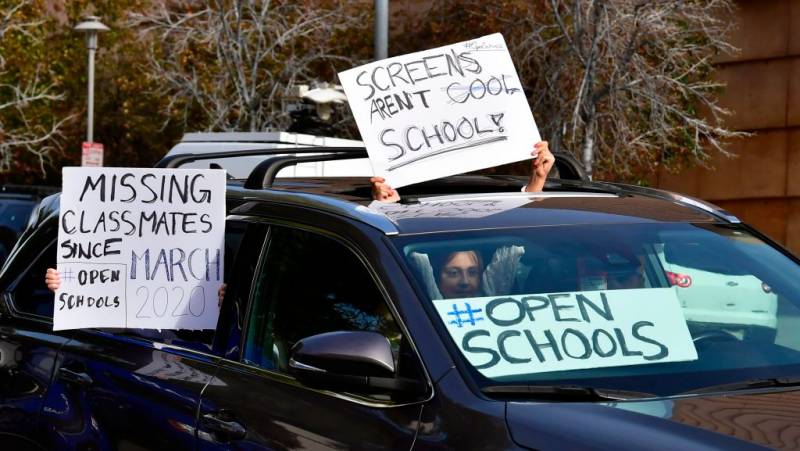But without a mandate, the bill might not move the needle in the most stubborn negotiations. And the legislation has no effect at all on the vast majority of middle and high school students. The plan only provides grants to bring back elementary school grades, along with one grade of middle or high school.
At Friday’s virtual bill-signing ceremony, Ting was left to describe the bill he authored as “a first step.”
“We’re going to go home to all our districts and beg all our districts to open up, use this money,” he added.
To be sure, the deference that Newsom and the Legislature have given to local decision-making is borne of the vast differences in public schools throughout the state.
“When you look at 58 counties, a thousand-plus school districts, this truly is a challenge at scale that no other state in the country is faced with,” Newsom said as he signed the legislation.
By comparison, former Rhode Island Gov. Gina Raimondo, a Democrat who gained national recognition for her work in reopening schools last year, dealt with roughly 60 districts — and the state already had control over its largest school district, in Providence.
California’s new legislation ensures the state will not be a hurdle for districts keen on opening their doors: There are no mandates to vaccinate teachers or reach collective bargaining agreements with unions — and districts located in counties outside of California’s purple COVID-19 tier will not be required to test students and staff for the virus.
Ultimately, the bill’s guarantee that 10% of the state’s vaccine doses be set aside for school employees (codifying an earlier promise made by Newsom) may be the most important provision in nudging teachers back into the classroom. In just the last week, an increasing vaccine supply and the hope of a continued decline in infections has accelerated the progress of reopening schools in large districts like San Francisco and Fresno.
Republicans are generally supportive of handing authority to local governments; the leading Republicans seeking to challenge Newsom in a potential recall election this year said they would also not have suspended collective bargaining rights to force reopenings. Just four GOP legislators in the state Senate and Assembly voted against the plan.
State Sen. Rosilicie Ochoa Bogh, R-Yucaipa, argued that “it is essential that we have local control.”
She recalled a recent meeting with constituents, when a frustrated audience member asked her who bears responsibility for the decisions being made at his local school.
“I said, ‘You are, you are ultimately in control of your local schools,’ ” said Ochoa Bogh, who served on the Yucaipa-Calimesa Joint Unified School District before her election to the Senate last year.
“If you’re not happy then, lo and behold, go ahead and find candidates that reflect your values and your vision of education and get them elected,” she said.
Attention on School Boards
In a number of cities across the state, many parents aren’t waiting for the next election to decide the fate of their school boards. Recall campaigns against individual board members have been launched in Benicia, La Mesa and San Ramon. And in San Francisco, critics of the board are pursuing a recall and a wholesale change in how members are selected.
Facing both impatient Sacramento lawmakers and exasperated parents, “school boards have really been stuck in the middle,” said Troy Flint, senior director of communications for the California School Boards Association.
“They’re dealing with parent communities which are often rife with division on this issue,” he said. “And they don’t really have the framework needed to effectively pursue negotiations on reopening, because there hasn’t until now been the standard for the state on what acceptable measures of safety are to reopen.”

